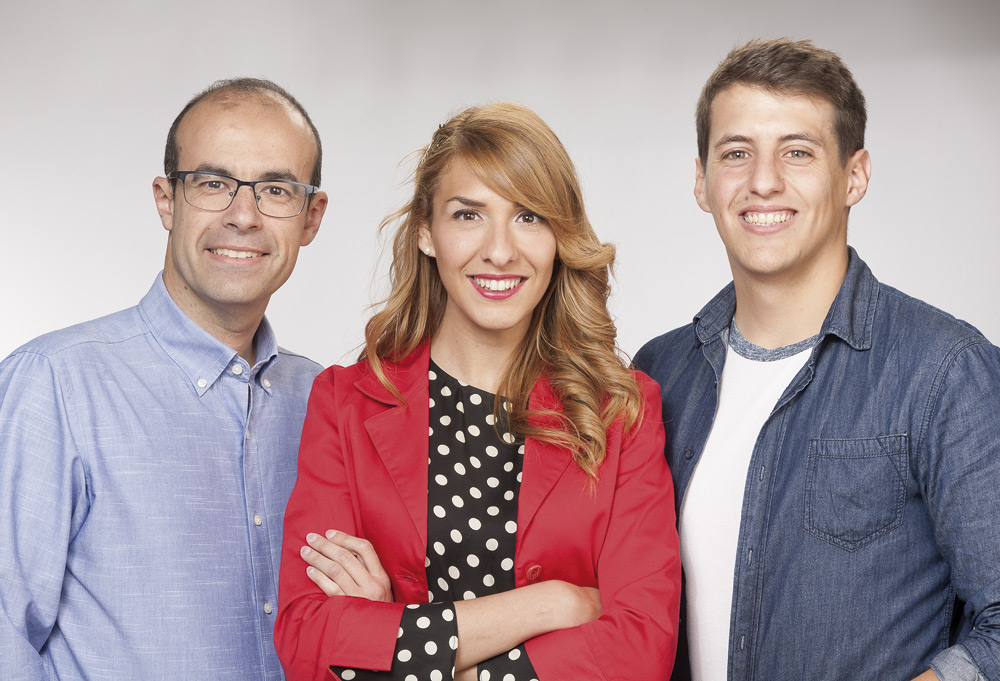First television programme in Aragonese
- They requested it several times, but they did not manage to do so until 2018, as they requested the television program on the public television Aragón TV. The first season has been very successful and in September the second season will begin in the current program Charrín Charrán.

Aragonese Silvia Onion was teaching Aragonese courses at the Noará cultural association. All of a sudden, the people from the production company A rolled up to tell them that some teacher who was teaching language courses in the association could be the host of the first television show in Aragonese. The producers saw Onion teach and chose her for a presenter. The fist feels that in his struggle for the Aragonese he has done a little bit more. It's gotten complicated in that fight. He learned his language at the age of 19 when he approached a cultural association. He fell in love with the Aragonese. Before starting the television program, he opened a Youtube channel to talk about vegan cuisine, of course, in Aragonese. I wanted to use modern means to attract young people in particular.
Session for speakers and non-speakers
For him, it was a surprise to start as a presenter, not so much as starting a program. In fact, the Aragonese defence associations had been calling for the programme for years and had already sent a concrete project to Aragon TV for a long time. According to Onion, it was the language law of 2010 that gave a fundamental boost. This law, among other things, stipulates that the media must accommodate the Aragonese languages. The program premiered eight years later, at the Teatro Principal de Vitoria-Gasteiz.
He has told us that they are satisfied with the reception that the television programme has had. People have responded with a lot of affection and have had a very intense movement on social media, where there have been many. Among the programs of Aragon TV, those with the most followers of Instagram and Twitter are those who participate.
The half-hour programme is broadcast every Sunday morning. The program includes reports, an in-depth interview, the Pizarra and Clarion language section, Magical World (children are the protagonists) and fiction. They were very clear that the programme was going to be cultural, but that it would talk about all the issues. They wanted to abandon some myths that still persist in language. Many people believe that the Aragonese only serves to talk about the things of the countryside and that only the old are speakers. The program enters the rural and urban world and has found speakers of all ages willing to stand before the camera through Aragon. It is no coincidence that Silvia Onion is the presenter and Jorge Pueyo appears in the production of reports. They wanted to show diversity on the front line: Onion is a mature language and Pueyo is 23 years old and from Fonz. Among the largest towns, Aragonese is one of the most widely spoken. Aragonese is the first language of Pueyo. They wanted to make a young programme in which they were taught that you can talk about everything in Aragonese.
Onion admits that the pressure has felt a little, as it is the first time that something like this is done. Many people from Aragon have never heard of Aragonese, they do not know what it is, and the program is a good opportunity for it: “On the street I meet people who say they know that they speak Aragonese, but they don’t know how to say more, and many have never heard it. It's very hard. The program will help normalize the language.”
The Aragonese speakers, for their part, have seen the programme proudly. That is what happened to those of Fonz. You've seen the young compatriot working as a reporter in Aragonese. Onion says they feel that the language they speak every day has dignified. They were surprised that their compatriot spoke Aragonese on television, as no Aragonese speakers appeared on public television before the programme. Speakers have been proud to have seen the program and have given their "yes" to participate in the program. The guests have felt recognised because they have been given the opportunity to go on television.

It also serves to break with another myth. Several Aragonese speakers have been surprised by their ability to understand the presenter and the reporter. They have interiorized that speak Aragonese very different here and there. Many have been surprised to understand the language to someone who has later learned it, because I didn't expect it. Reporter Pueyo has an Oriental language and when he has traveled to the West, many citizens have been convinced that they would not understand it. “They are almost convinced that it is the language of the people and that understanding is Martian. They are accustomed to speaking in the village, not out of it.”
Now, the citizen of any corner of the territory normally listens to speakers from any other part of the country. However, the program is not just for Aragonese speakers. They also want to catch those who are not speakers and if they are encouraged to learn the language, much better. Onion says that whoever knows Spanish as a Latin language has no trouble understanding almost everything. However, the viewer can use the Spanish subtitles for the deaf to follow better. The presenter has warned us that even the one who speaks Spanish in Aragon, conscious or unaware, uses quite a few words in Aragonese. So, it's easier to make the language known to the ear. According to Onion, the number of Aragonese students has increased in recent years and the television programme has contributed to this.
Charrín Charrán starts the second season and, as the title of the program indicates, they will continue every Sunday talking, talking and talking, in Aragonese.
Aragonese in danger
According to the UNESCO classification, the Aragonese is in danger of disappearing, that is, their children no longer receive the language from home. According to a study carried out in 2017 by the Aragonese Seminar of Sociolinguistics, the data on the situation of Aragonese are as follows:
25,556 Aragonese are able to speak in Aragonese.
According to UNESCO data, the speakers are about 10,000. It should be taken into account that the study of the Seminar is based on census data from 2011, in which the citizen is asked whether he can speak Aragonese or not. It is suspected that, despite not knowing the language, they are able to speak and answer that they speak. The knowledge of some words and expressions makes them think that they know the language, because they are not aware that it is the whole language and it is not just a matter of vocabulary. Many think that the figure of 25,000 is very swollen.
17.009 are able to write.
Where do we talk more?
Jazetania, Alto Gállego, Sobrarbe, HOYA de Huesca, Somontano de Barbastro and Cinca Centro.
Zaragoza:7,183 speakers.
Aragonese has long been lost in Zaragoza. They are speakers of this territory or are newly learned or are inhabitants of the rural Aragonese.
Huesca: 1,048 speakers.
Teruel: 448 speakers.
Source: Study carried out in 2017 by the Seminar of Sociolinguistics of Aragon. The data for the census date back to 2011.













